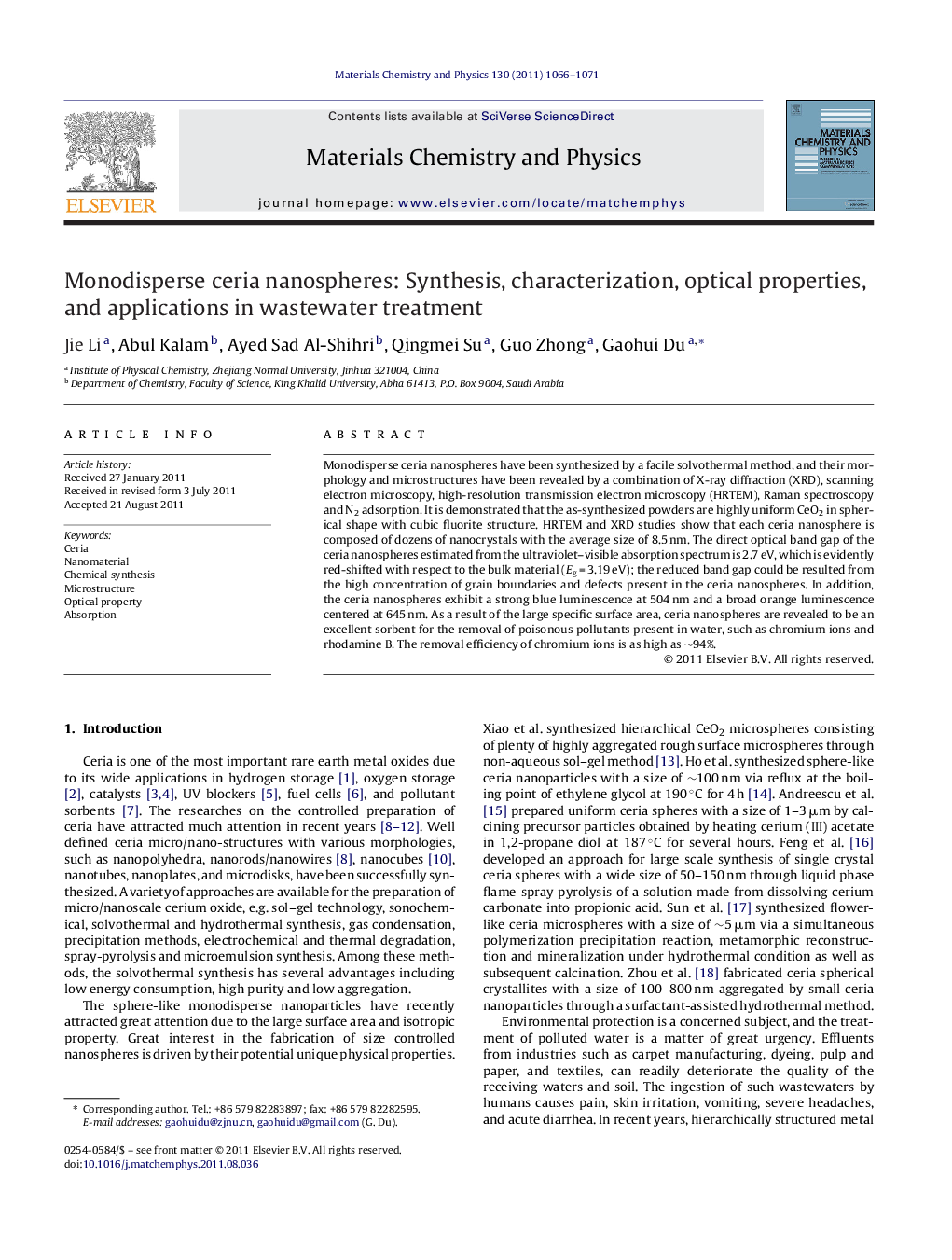| Article ID | Journal | Published Year | Pages | File Type |
|---|---|---|---|---|
| 1523517 | Materials Chemistry and Physics | 2011 | 6 Pages |
Abstract
Monodisperse ceria nanospheres have been synthesized by a facile solvothermal method, and their morphology and microstructures have been revealed by a combination of X-ray diffraction (XRD), scanning electron microscopy, high-resolution transmission electron microscopy (HRTEM), Raman spectroscopy and N2 adsorption. It is demonstrated that the as-synthesized powders are highly uniform CeO2 in spherical shape with cubic fluorite structure. HRTEM and XRD studies show that each ceria nanosphere is composed of dozens of nanocrystals with the average size of 8.5 nm. The direct optical band gap of the ceria nanospheres estimated from the ultraviolet-visible absorption spectrum is 2.7 eV, which is evidently red-shifted with respect to the bulk material (Eg = 3.19 eV); the reduced band gap could be resulted from the high concentration of grain boundaries and defects present in the ceria nanospheres. In addition, the ceria nanospheres exhibit a strong blue luminescence at 504 nm and a broad orange luminescence centered at 645 nm. As a result of the large specific surface area, ceria nanospheres are revealed to be an excellent sorbent for the removal of poisonous pollutants present in water, such as chromium ions and rhodamine B. The removal efficiency of chromium ions is as high as â¼94%.
Related Topics
Physical Sciences and Engineering
Materials Science
Electronic, Optical and Magnetic Materials
Authors
Jie Li, Abul Kalam, Ayed Sad Al-Shihri, Qingmei Su, Guo Zhong, Gaohui Du,
